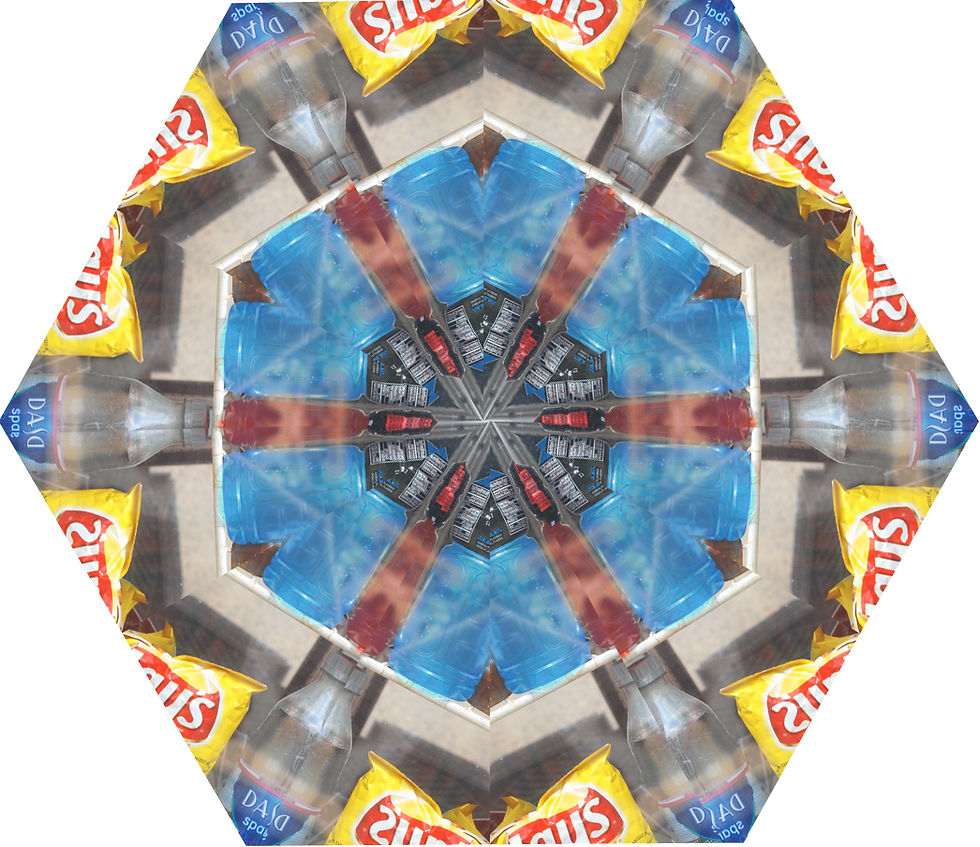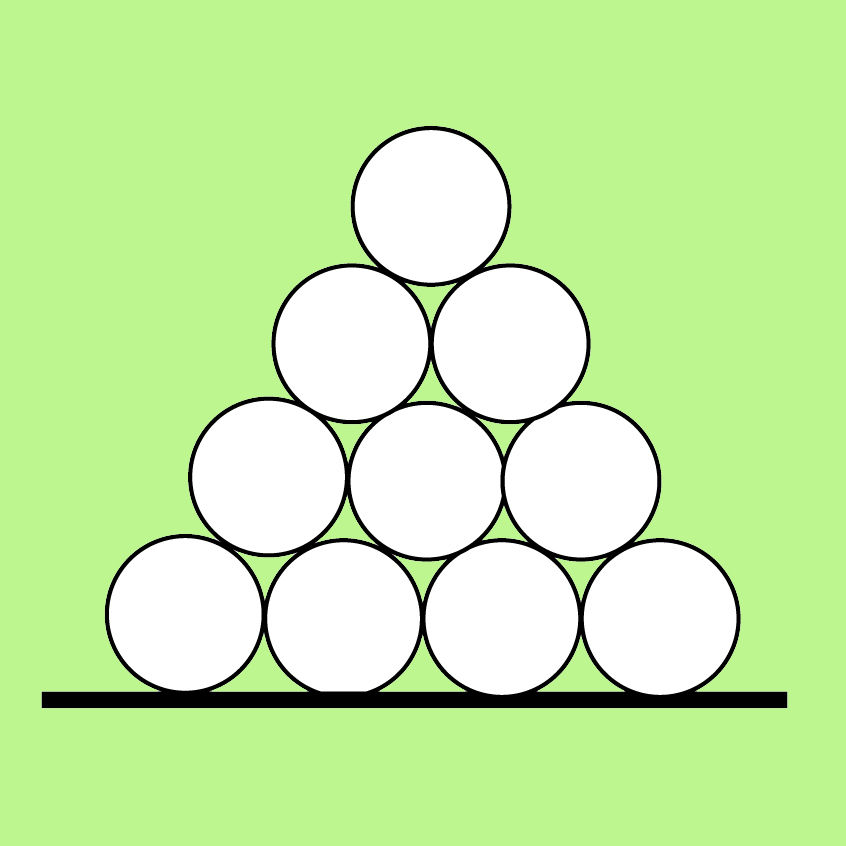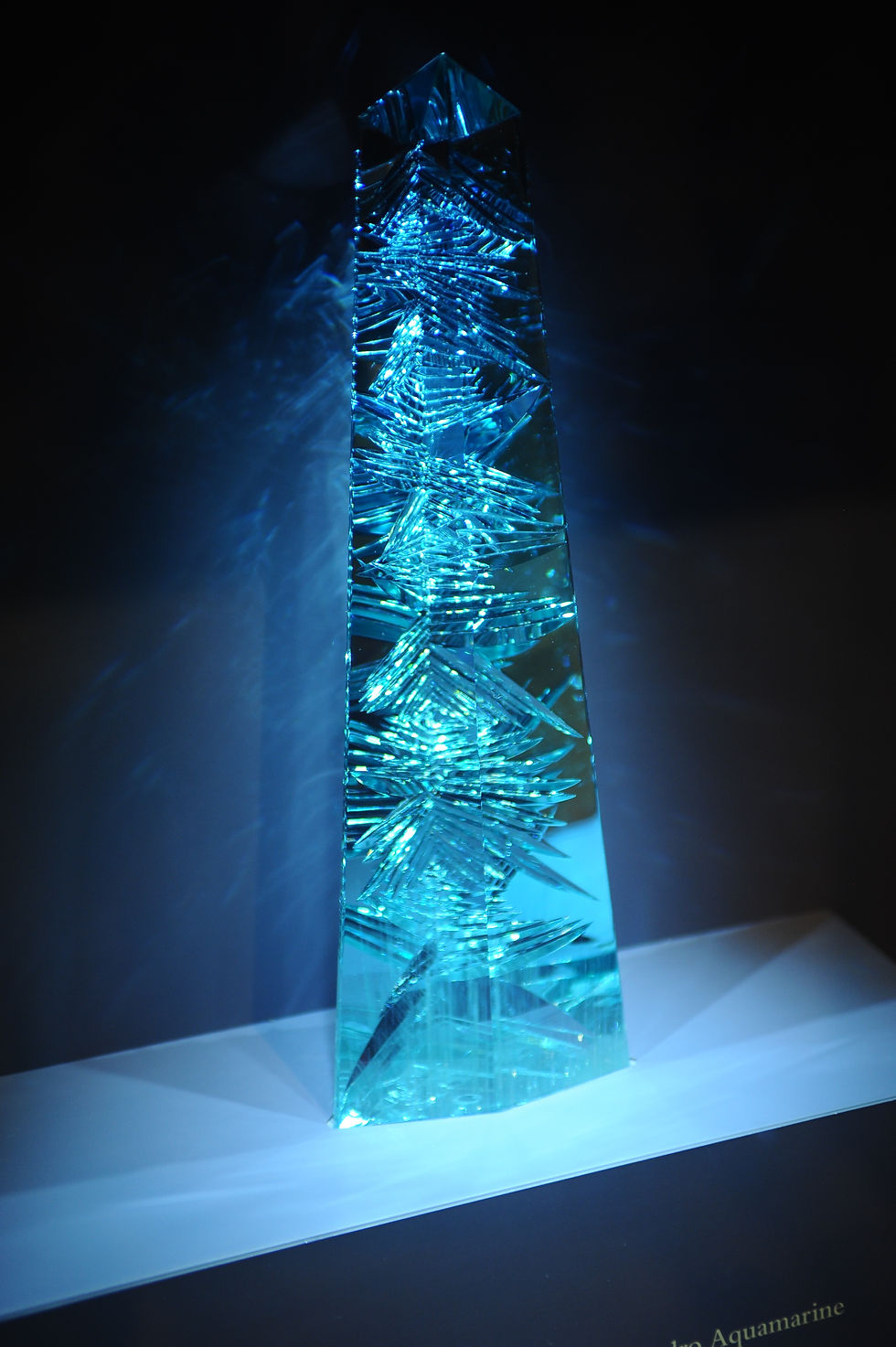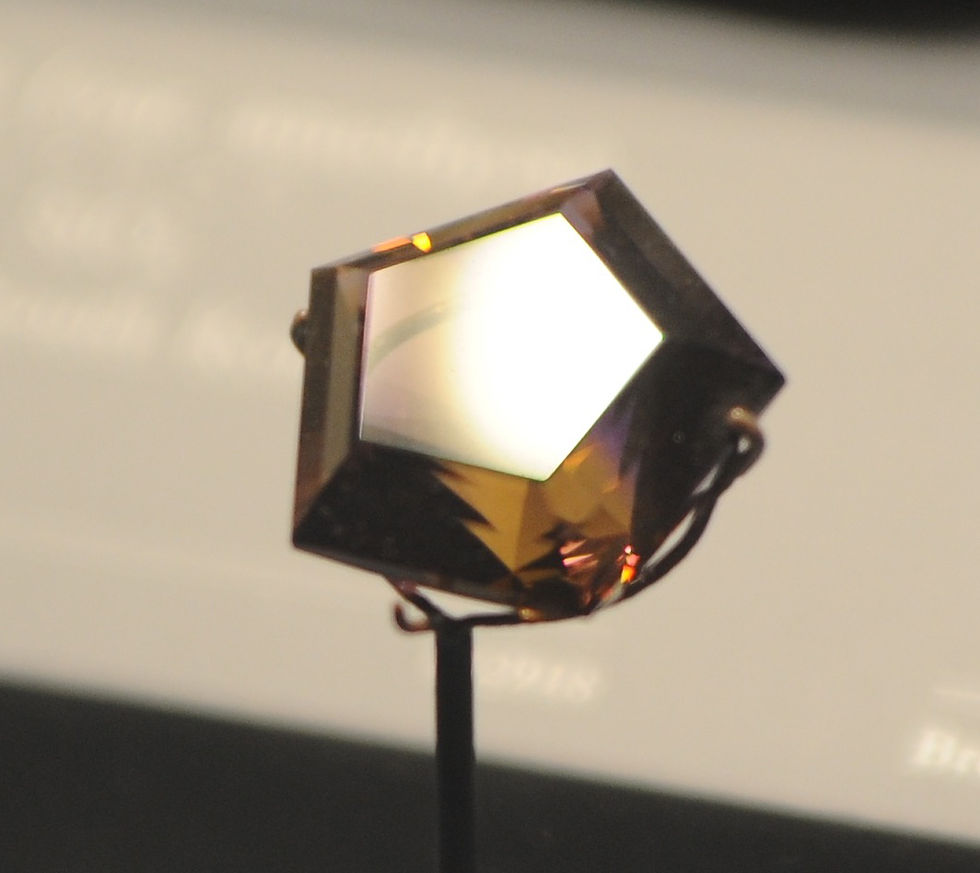Pattern Patter
- Peter VanderPoel
- Aug 15, 2016
- 6 min read
Humans seem to have a predilection for pattern. I suspect it's contributed to the survival of the species. Recognizing patterns allows us to understand a comprehensive whole rather than a supposing a smattering of parts.
I bought a kaleidoscope years ago. This particular model is comprised of a cylinder and a drum, the viewing tube is standard kaleidoscope with a pair of mirrors to create the image. The drum at the end contains a liquid, a transparent plastic portion that admits light which rotates on the tube's center axis. In the liquid is a pile of plastic bits that might have been shoveled out of the mid-Pacific Gyre. When I look through it to see a mirrored, hexagon image of this lit junk it is magic.

I've put together two images to illustrate the effect. The first is a photograph of snacks quietly resting in a food vendor's cart. There is nothing particularly beautiful about it, except, perhaps, a variety of bright colors. Taking a portion of the same image and repeating it a hexagonal pattern, just as some kaleidoscopes do, it becomes arresting. It is the same information, but arranged in a way that humans find beautiful.
In trying to tease out what it is that makes it beautiful, I suspect several factors contribute:
1. The first image is a collection of unrelated things and thus, patternless.
2. The second, as a pattern, is understood as a whole.
3. The second image, as a recognizable geometric figure, appears complete.
The original photograph could be longer or taller, to add more chips and fewer drinks would not make it substantially better or worse. To make a hexagon with the original "pie slice" altered in that way would not make much of a difference either. To remove one of the 'facets' however would make it incomplete. To add another would destroy the mirrored rhythm. To change it to an irregular shape would also make it appear incomplete - we have a predisposition as to what constitutes a 'complete' image.


The oldest extant treatise on architecture come to us through a feature-length resume written by Marcus Vitruvius Pollio, a job hunter trying to find a position Julius Caesar's organization around 2000 years ago. To show off his knowledge of all things regarding the built environment, he wrote a treatise on architecture in 10 books. Why 10? Perhaps because, as a base-10 species, we view that number as "complete". Keep in mind, however, that the codex had not been invented, these "books" would have been stored as scrolls, laid on their side. What pattern of stacked scrolls would look complete? - 10- arranged as an equilateral triangle.
Plato also spent some time thinking about geometry and illuminated some ideas about pattern and form. He has lent his name to the Platonic Solids, a group of 5 forms that fit the following criteria:
1. Each face of the solid is a regular polygon.
2. Each face is identical.
3. Each edge, where two planes meet, is the same length.
4. All vertices touch the surface of an enclosing sphere.
The most familiar of these forms is a cube with a square as the generating polygon. The others include the tetrahedron, octahedron and icosahedron, based on triangles, and the dodecahedron assembled from pentagons.
In Plato's Timaeus, each solid represented an earthly element: earth, air, fire and water. In platonic thinking, these four represented a complete set, everything was formed by some combination of these items. The fifth, or quintessence (the fifth essence) the dodecahedron represents the universe. There was nothing extraneous to the list- it is complete. Some also believed that these perfect, complete solids could not be sub-divided and so foreshadowed the discovery of atoms. The word "atom" can be understood in two pieces: "tom" - to cut, as in appendectomy, lobotomy, anatomy; and a- meaning "without" - so the word identifies something than cannot be further reduced. These forms fit that criteria as wells as a criteria of good design in that nothing can be added or subtracted without ruining the whole.
Geometry is one of the few fields of thought that can be proved to another through reason. Part of learning geometry is developing a proof, as did Euclid, that can be used to "prove" to another the validity of the proposal. Each step, like logical argument, can be divided into a collection of True/False statements. If any of the dependent statements is false, the whole is false.
There are all sorts of things and experiences that could be understood with this notion of finite design. Were Plato a sports fan, he might allow a soccer ball in to his pantheon of solids. It's disqualifying characteristics is that it is composed of both hexagons and pentagons. But once again all the sides of both the pentagons and hexagons are the same length and it fits neatly into a sphere.

This desire for completeness appears in other forms, too. Composer Aaron Copeland had been quoted as saying that his job as composer was to make his music seem inevitable. He knows what people expect as a composition is performed. There is a beginning a development and an end
The Museum of Natural History in Washington, DC has a fabulous collection of gems and minerals. Many minerals are presented in their natural state. Many of these, in the process of their creation, have a geometric preference or cleavage. As defined in National Audubon Society's Field Guide to Rocks and Minerals, cleavage is " the tendency of some minerals to break along one of more regular, smooth surfaces". These breaks often have an angular relation to each other. With salt, the cleavage is a perfect cube with the planes at right angles to each other. The block of calcite, pictured below, may seem to be a regular block with right angles. The shape is actually a rhombohedron with an angular relation of facets at 74.95 degrees. This relationship naturally occurs due to the molecular construction of calcite. Many gems have a similar, planar, preference and, when found in nature with these naturally occurring geometric planes would naturally catch the eye and the imagination of the human viewing it.

When reviewing architectural students' work, we would often see projects where an oblique angle would be inserted into the design. The first question was always, "where did that angle come from? " Often there would be a sweaty second or two, sometimes followed with the response, "because I liked it". I would respond, "but I don't, so it's a draw". I would try to convince the student that the angle has to come from somewhere; be based on something. The angle that defines Maya Lin's Vietnam Memorial in Washington, DC. for instance, is created by drawing lines from the site to the Washington Monument and the Lincoln Memorial. Other inspirations could include the location of sunrise on the summer solstice, true north or an old trader's path.
Dom Pedro, the largest single piece of aquamarine found to date is on display at he Museum of Natural History in Washington DC. Although it had beautiful color and clarity, I was not mesmerized. The reason is that the pattern inscribed in the piece seems random. Where did those angles come from? Could they be different? Sure, why not? If it were at a different angle or depth? Meh. Whatever.

Most gems have the origin of the planes literally in their molecular structure. Those planes become patterns that are repeated throughout the stone. Even when an artificial cleavage is imposed, it is often done, such as the pentagonal piece below, where all the shapes are interlocked in such a way that no single plane could be altered without affecting the whole.

For architects, as for Aaron Copeland, the goal is often to convey a sense that the thing is complete. There is nothing to add and nothing can be taken away. All the pieces lock are inextricably linked to the whole.
There are legions of stories about Frank Lloyd Wright's tyrannical insistence on what he thought was good design, including the location of knick-knacks in his homes. One story has him whacking a small glass object with his cane, to shift its location to the "right" place on a shelf.
When teaching, I suggest to the students that if they were to put their floor plan, sections, elevations and details on the wall, the viewer should be able link them together not by the drafting or the title blocks, but because of the driving idea that should be informing every decision they make and should be echoed throughout the project.
The best case scenario for an architect is to make their work complete, aiming for the same thing as jewelers do when creating their work. The large and small things have communion, a system has been adopted and all work items conform to it, the details speak the same language as the plans.
As mentioned in a previous blog, Engineering and some other pursuits are searching for the one, unassailably correct answers; all others are "wrong". Architects, on the other hand, are working across the range of better to worse. I suspect that is why architects can be so sniffy when discussing their work. They want others to accept it as "right", and so some apply a patina of arrogance masquerading as certitude as a convincer, since certainty and "right" are not available as options.




Comments